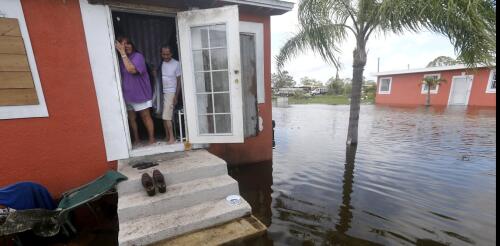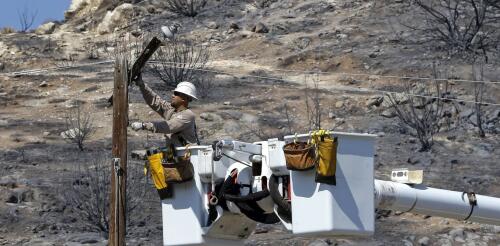Utilities
Coast to coast, millions of Americans are experiencing sweltering temperatures this summer, with seemingly little relief in sight. For people who struggle to access or afford air conditioning, the rising need for cooling is a growing crisis. An alarming number of Americans risk losing access to utility services because they can’t pay their bills. Energy utility providers in 2022 shut off electricity to at least 3 million customers who had missed a bill payment. Over 30% of these disconnections happened in the three summer months, during a year that was among the hottest on record. In some cases, the loss of service lasted for just a few hours. But in others, people went without electricity for days or weeks while scrambling to find enough money to restore service, often only to face disconnection again. As researchers who study energy justice and energy insecurity, we believe the United States is in the midst of a disconnection crisis. We started tracking these disconnect...
Electricity is essential to just about everyone – rich and poor, old and young. Yet, when severe storms strike, socioeconomically disadvantaged communities often wait longest to recover. That isn’t just a perception. We analyzed data from over 15 million consumers in 588 U.S. counties who lost power when hurricanes made landfall between January 2017 and October 2020. The results show that poorer communities did indeed wait longer for the lights to go back on. A 1-decile drop in socioeconomic status in the Centers for Disease Control and Prevention’s social vulnerability index was associated with a 6.1% longer outage on average. This corresponds to waiting an extra 170 minutes on average for power to be restored, and sometimes much longer. The top map shows the total duration of power outages over eight storms by county. The lower map is a comparison with socioeconomic status taken into account, showing that counties w...
During the height of the COVID-19 pandemic, Detroit residents got a break from water shut-offs. In March 2020, just after the coronavirus made hand-washing a matter of public health, the City of Detroit announced a plan that kept water services on for residents for US$25 a month, with the first payment covered by the state. Although all Detroiters had access to water during the pandemic, they continued to be billed at the higher standard rates. In early 2023, Detroit resumed water shut-offs for bill nonpayment. Approximately 60,000, or 27% of Detroit’s 220,000 residential customers, had past-due bills last summer, according to the Detroit Water and Sewerage Department. The average customer owes $700, but some owe as much as $10,000 due to years of unpaid bills. Although a variety of factors contribute to large past-due balances, water services in Detroit are expensive for many households, and the costs are rising. We are geographers and policy analysts with an intere...
The U.S. is nearing the end of one of its hottest summers on record. Across the nation, heat waves have driven peak electricity demand on some days to levels far exceeding seasonal averages. Grid operators rely on so-called “peaker” plants to ensure they will have enough supply to meet these demand surges. Peaker units can start up quickly and at relatively low cost, but they typically burn more fuel per unit of electricity produced than other types of fossil fuel units. Because they are less efficient than other plants, peakers typically run only during high-demand periods. Historically, peakers have run for less than 10% of the year, often for just a few hours at a stretch. Nonetheless, their higher emissions per unit of electricity produced raise environmental and health concerns. As of 2021, there were 999 peaker plants across the U.S., in all 50 states. About 70% of these plants burned natural gas, and the rest were powered by oil and coal. To reduce air p...
Maui County is suing Hawaiian Electric, claiming the utility was negligent for not shutting off power as strong winds hit the island in the hours before the city of Lahaina burned. While the cause of the devastating Aug. 8, 2023, wildfire is still under investigation, forecasters had warned that powerful winds were expected, and West Maui had exceptionally dry conditions that put it at high risk for wildfires. In many cases, however, deciding to shut off power isn’t as simple is as it might sound. We asked Tim Lieuwen, executive director of the Strategic Energy Institute at Georgia Tech, about the risks and trade-offs utilities have to weigh in deciding how to respond during fire-risk conditions. Why are utilities so often suspected in fires? There are a lot of ways that utility lines, particularly high-voltage lines, can spark fires. If tree branches are too close to the lines, electricity can arc between the line and the tree. Old equipment can set off sparks. If the w...



